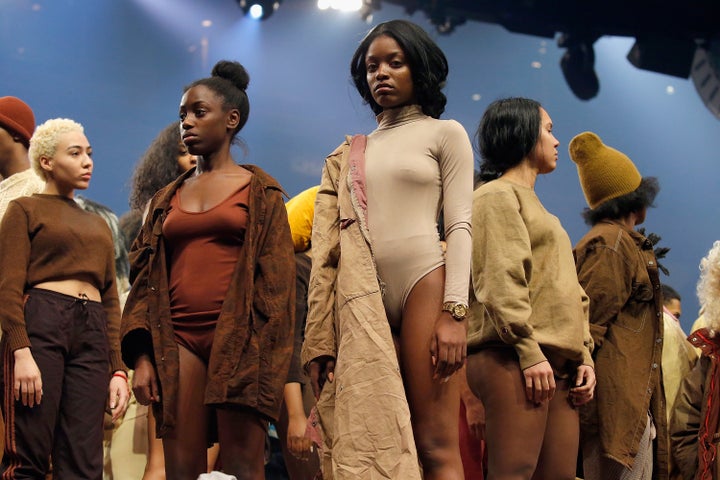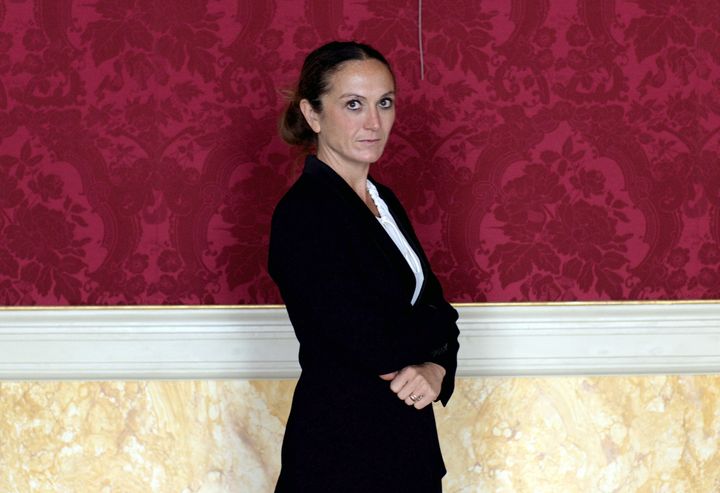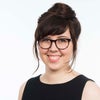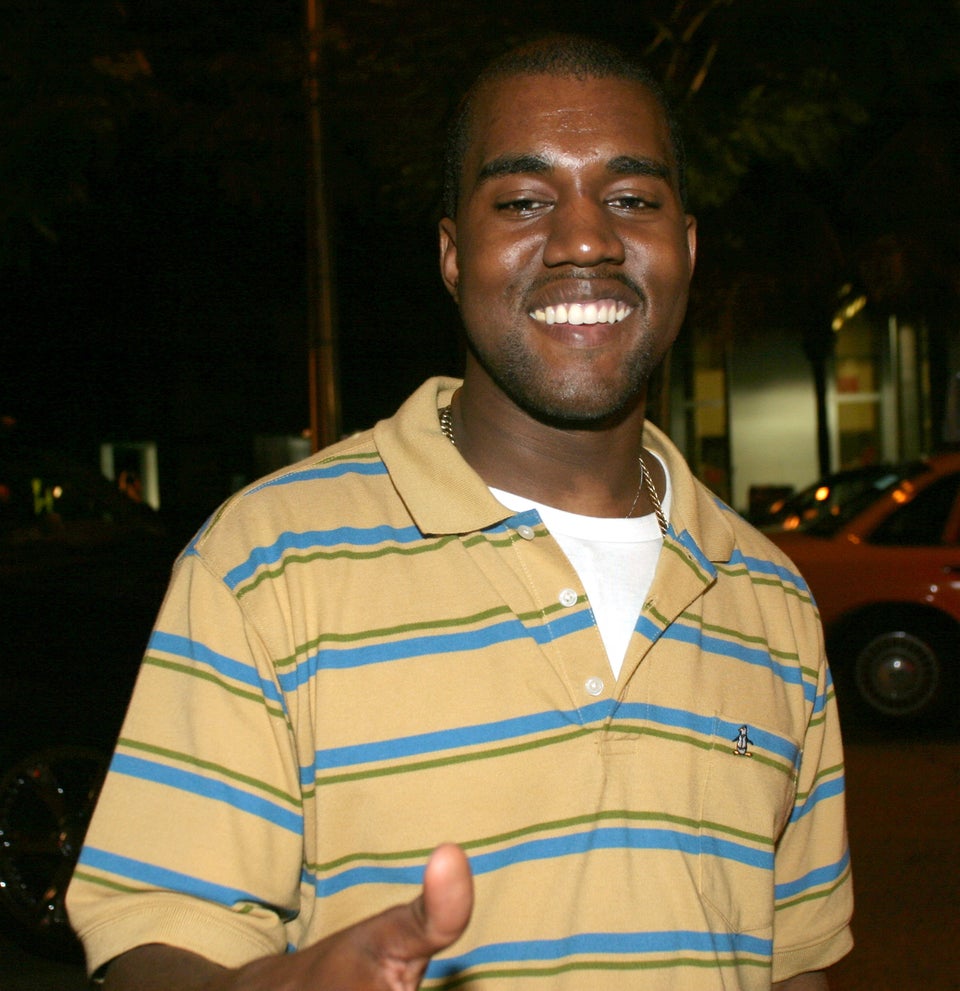
Vanessa Beecroft is an artist. Vanessa Beecroft is a well-known Kanye West collaborator. Vanessa Beecroft is also an incredibly privileged Italian woman who unleashed a dumpster fire of ignorant commentary in a recent interview with New York Magazine.
Let’s back up, though: Some of us know Beecroft as the woman who helped design the set of Yeezy Season 3 and other Kanye projects. Others might know her as the progenitor of controversial artworks like “White Madonna with Twins” or the delightfully unhinged presence in “The Art Star and the Sudanese Children.”
In “White Madonna,” Beecroft appears to be breastfeeding two black children from Sudan in a custom-made Maison Margiela dress. In the aforementioned documentary, Beecroft can be seen ― and this is real, friends ― attempting to adopt those two same Sudanese children, unbeknownst to her husband or two children back home, and despite protestations from local Sudanese women.
All of us, after reading Amy Larocca’s interview in NY Mag, think Beecroft is woefully detached from planet Earth. (Sorry, that powder protein is not working.) She might be a friend of Kanye, but she has a heavily covered history of sounding and acting like a plain ol’ racist white lady.
Here are just a few excerpts from the NY Mag profile that effectively underscore Beecroft’s status as “absolutely not woke.”
There was this moment:
“I have divided my personality,” she says. “There is Vanessa Beecroft as a European white female, and then there is Vanessa Beecroft as Kanye, an African-American male.” Later she tells me, “I even did a DNA test thinking maybe I am black? I actually wasn’t. I was kind of disappointed, and I don’t want to believe it. I want to do it again, because when I work with Africans or African-Americans, I feel that I am autobiographical. If I don’t call myself white, maybe I am not.”
And this gem, in reference to the Yeezy Season 3 aesthetic:
“The image came out of one of my books, and I thought, Perhaps this is Woodstock, because it looked really fashionable and glamorous, but no. That was a refugee camp … I wanted the people to look poor. Poverty and elegance were the key words. Poverty and elegance. No trends, no fashion. Real poverty, what you encounter when you travel to Africa, Mexico, those countries where people wear their clothes with dignity and they look elegant and they look like they have intelligence. When we were casting, I said, ‘Please don’t have anyone who looks stupid. Or fancy. Please. Classical, poor, and elegant.’”
And this:
As an adult, she began to cast black women when she first came to America. “My first black project was originated by the fact that I met a bluesman from Chicago in Italy and he was white and he was really, really upset by being white, he kept saying, ‘If only I was black.’ He felt discriminated against. And that really triggered something for me. I said, ‘I’m going to be black, too,’ ” she tells me. “I had wanted to move to the States because of the presence of African-Americans. When I landed at JFK, my first impression is being welcomed by all of these African, or maybe Jamaican, air people that help you at the airport with your luggage. They were so kind. Welcome! I was so happy to see mixed races. In Italy, they are in the street selling gadgets.”
And this, which is just an affront to Beyoncé:
As for popular culture, she’s working on “a Barbie doll project” for Mattel. Perhaps some of them will have “caramel Beyoncé skin,” she says, acknowledging murmurings (including from her husband) that Beyoncé’s “Formation” video owes her some creative debt. But she doesn’t get into any of it too deeply, she says, because she has only the vaguest idea that someone named “Beyoncé” actually exists.

Is there more? Oh, yes, there is more. Beecroft calls her home a “favela,” despite the fact that she enthusiastically explains her need for wealth, because she has “nannies and tutors and trainers” to pay. She describes Kanye as her “Orestes,” which is a comically misplaced reference to Greek mythology. And she insists that everyone in South Sudan is an Alek Wek lookalike.
And we could go on.
But the bottom line is this: When a white woman named Rachel Dolezal confessed to deceiving the Spokane NAACP chapter by presenting herself as a black women, the world reacted accordingly. But when a wealthy performance artist like Beecroft tries her hand at similarly habitual cultural appropriation, she lands herself smack dab in the middle of New York Magazine ― with as many art world endorsements as she could muster.
In the profile, interviewer Larocca was, at times, pretty forgiving of Beecroft’s wild life assertions: “She appears unaware of — or at least unconcerned with — the debates and discussions that captivate most members of these [art and fashion] industries (and their critics). Nor is she preoccupied with political correctness, and in fact seems to enjoy blithely poking at its taboos.”
Lilly Workneh, senior editor of HuffPost Black Voices, has a better take: “You can’t adopt blackness at your own will just so you can try to make your work more palatable for people of color/black folks. She’s a white woman who is deliberately questioning her race and trying to claim blackness or black culture because her work revolves around it and that’s not only delusional, it’s totally disrespectful ― both to the same black people she works with and those she seeks praise from. It’s appropriation to the max.”

